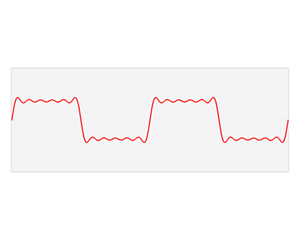
In mathematics, physics, electronics, control systems engineering, and statistics, the frequency domain refers to the analysis of mathematical functions or signals with respect to frequency (and possibly phase), rather than time, as in time series.[1] Put simply, a time-domain graph shows how a signal changes over time, whereas a frequency-domain graph shows how the signal is distributed within different frequency bands over a range of frequencies. A complex valued frequency-domain representation consists of both the magnitude and the phase of a set of sinusoids (or other basis waveforms) at the frequency components of the signal. Although it is common to refer to the magnitude portion (the real valued frequency-domain) as the frequency response of a signal, the phase portion is required to uniquely define the signal.
A given function or signal can be converted between the time and frequency domains with a pair of mathematical operators called transforms. An example is the Fourier transform, which converts a time function into a complex valued sum or integral of sine waves of different frequencies, with amplitudes and phases, each of which represents a frequency component. The "spectrum" of frequency components is the frequency-domain representation of the signal. The inverse Fourier transform converts the frequency-domain function back to the time-domain function. A spectrum analyzer is a tool commonly used to visualize electronic signals in the frequency domain.
A frequency-domain representation may describe either a static function or a particular time period of a dynamic function (signal or system). The frequency transform of a dynamic function is performed over a finite time period of that function and assumes the function repeats infinitely outside of that time period. Some specialized signal processing techniques for dynamic functions use transforms that result in a joint time–frequency domain, with the instantaneous frequency response being a key link between the time domain and the frequency domain.